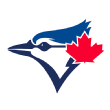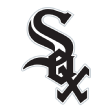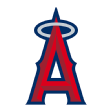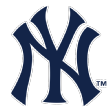With the minor leagues' regular seasons over, it's time to present our annual Prospect of the Year award, given to the prospect who showed the best performance in the minor leagues in 2018.
While the process of selecting the top prospects was ultimately subjective, I focused primarily on legitimate prospects who performed well relative to their age, level and experience in pro ball. In short, the younger a player was relative to the other players in his league -- especially when compared just to the players in his league with a chance to have some impact in the majors -- the more impressed I was with a strong performance.
The primary criterion here is performance as prospects while still in the minors, especially because so many top prospects ended up in the majors this summer -- performance I didn't count toward this list.
With that, here is my overall Prospect of the Year for 2018, as well as several other players who had outstanding seasons and deserved notice. I also gave a separate award to the 2018 draftee who had the best pro debut, as well as noted a handful of runners-up in that category.
Prospect of the Year
 Vlad Guerrero, Jr., '3B,' Toronto Blue Jays
Vlad Guerrero, Jr., '3B,' Toronto Blue Jays
Midseason rank: 2
This wasn't exactly a hard call, and it's now the second year in a row I've given this award to Guerrero, Jr. Baby Vlad hit .381 to lead all of the minors, slugged .636 to finish second in the minors to 28-year-old Jabari Blash and did so in Double-A and Triple-A at the age of 19, the equivalent of a college freshman. His plate coverage is exceptional, and his approach is well beyond his years and beyond anything his father ever developed.
The No. 2 prospect in baseball was slowed this year only by an injury that cost him about 35 games in June but didn't affect his performance at all. He returned to Double-A New Hampshire and hit in all seven games he played there before Toronto bowed to the inevitable and bumped him up to Buffalo. He struck out just 38 times and drew 37 walks for a strikeout rate under 10 percent compared to league averages of 21-22 percent. He's played at least 30 games at each full-season level in the Toronto system in the past two calendar years and his worst line was in low-A Lansing, where he hit .316 with a .409 OBP.
Guerrero remains a well below-average defender at third with very little chance to stay at the position, but there is zero question in my mind that he would mash against big league pitching if the Jays weren't blatantly manipulating his service time to save Rogers some cash. He's the obvious choice for our Minor League Player of the Year for 2018.
Runners-up
 Eloy Jimenez, OF, Chicago White Sox
Eloy Jimenez, OF, Chicago White Sox
Midseason rank: 3
Jimenez gets overshadowed by teammates quite a bit -- he was behind Gleyber Torres while they were both Cubs prospects, then was traded to the White Sox soon after the team acquired the more famous Yoan Moncada. And he is covered less than Vlad Jr., even though they're both in similar situations, deserving big league callups after huge years in Double- and Triple-A.
Jimenez hit .337/.384/.577 between the two levels at age 21, and continued to make contact at an incredible rate for a power hitter, with a nice 69 strikeouts in 456 PA, meaning he still has not struck out 100 times in a full pro season. He should be in the majors now, too.
 Alex Kirilloff, OF, Minnesota Twins
Alex Kirilloff, OF, Minnesota Twins
Midseason rank: 47
Kirilloff was the team's first-round pick in 2016 but missed all of last year due to Tommy John surgery (he pitched in high school as well as playing the outfield), so it was reasonable to expect him to need some time this spring to readjust to facing live pitching. Welp. Kirilloff crushed low-A pitching in his return, earned a promotion to high-A Fort Myers in the more pitcher-friendly Florida State League and just kept crushing with a composite line of .348/.393/.578, 44 doubles, 7 triples and 20 homers with only 86 whiffs in a full slate of 561 plate appearances
 Wander Franco, SS, Tampa Bay Rays
Wander Franco, SS, Tampa Bay Rays
Midseason rank: 17
The next great teenage superstar had his coming-out party this summer in the Appalachian League, where he was one of just two 17-year-olds playing but managed to lead the league in total bases and finished seventh in the league in OBP, third in slugging and tied for fourth in homers while walking more than he struck out (27 to 19). I'll be disappointed if he doesn't see the majors before his 20th birthday.
 Jo Adell, OF, Los Angeles Angels
Jo Adell, OF, Los Angeles Angels
Midseason rank: 10
The 10th overall pick in the 2017 draft made some modest tweaks to his swing and stance, and it paid off in a huge way, as he ripped through both levels of A-ball to finish the year with Double-A Mobile at age 19. He compiled a .565 slugging percentage between low-A and high-A and impressed scouts with his plate discipline while posting strikeout rates just a little above league average until his promotion to Mobile in mid-August.
 Nathaniel Lowe, 1B, Tampa Bay Rays
Nathaniel Lowe, 1B, Tampa Bay Rays
The Rays have too many Lowes, with Brandon in the majors, former first-rounder Josh struggling in A-ball and Nathaniel, a 13th-round pick from a Florida junior college, coming out of nowhere this year to mash in high-A and Double-A at age 22. He posted a composite line of .348/.438/.597 before a late-season promotion to Triple-A slowed him down. He's limited to first base only and doesn't project as a star, but his performance this year was one of the best in the minors, and even more impressive given that he'd never hit like this before.
 Kyle Tucker, OF, Houston Astros
Kyle Tucker, OF, Houston Astros
The Astros' top prospect hasn't produced in the majors yet in a tiny sample (and even that has been marked by bad luck, not any sign he's been overmatched), but as a 21-year-old in the hitter-friendly PCL he hit .332/.400/.590. Those marks were good for third in the league in average, fifth in OBP and second in slugging -- and in each case only behind much older players.
 Chris Paddack, RHP, San Diego Padres
Chris Paddack, RHP, San Diego Padres
Midseason rank: 38
I don't name a specific Pitcher of the Year, but if I did, it would be Paddack, who returned from 2016 Tommy John surgery as good as ever, punching out 120 batters (35 percent) and walking only seven batters across 90 innings between high-A and Double-A. He made 17 starts on the year, and in 13 of them allowed no more than one run.
The Padres chose to shut him down at 90 innings, which I think is the only reason he's not in their September rotation over Brett Kennedy or Bryan Mitchell, but I do expect him to spend most of 2019 in the majors. He really has nothing left to prove in the minors at this point.
 Dean Kremer, RHP, Baltimore Orioles
Dean Kremer, RHP, Baltimore Orioles
Kremer led the minors in strikeouts with 178, doing so in 131.1 innings and posting a 2.88 ERA between high-A and Double-A while splitting his season across two organizations after going from the Dodgers to the Orioles as part of the return for Manny Machado.
The UNLV product pitched for Team Israel in the 2017 World Baseball Classic, and he succeeds with great feel to pitch and some deception in the delivery, showing a plus fastball and above-average breaking ball, although scouts project him more as a back-end starter than what you might expect from the K rate.
 Josh James, RHP, Houston Astros
Josh James, RHP, Houston Astros
James was the Astros' 34th-round pick in 2014. His career was unremarkable before 2018, as he was throwing hard without much command, walking too many guys and giving up a lot of hard contact. He got serious about his craft and his conditioning before 2018, however, and started missing more bats -- a lot more, with a strikeout rate of almost 41 percent in Double-A and 35 percent in Triple-A, enough that he finished fourth in all of minor league baseball in strikeouts despite throwing just 114 innings.
He's in the majors now and has been hitting 100 mph with good spin on the pitch. His delivery isn't great, and there's definitely relief risk here, but his year was among the best in the minors.
 Mike King, RHP, New York Yankees
Mike King, RHP, New York Yankees
King was the Marlins' 12th-round pick in 2016 out of Boston College, a command/control guy without great stuff, and pitched like an org arm in low-A a season ago, but his 2018 was outstanding and saw him run up to Triple-A despite still not having particularly impressive pure stuff. King posted a 1.79 ERA between high-A, Double-A, and Triple-A, and he struck out just under a man an inning and walked just 4.5 percent of batters he faced on the year.
He pitches with average velocity and doesn't have even an average breaking ball, but his cross-body delivery makes it tough for right-handed hitters to pick the ball up out of his hands. He's not a top prospect, probably not a starter in the long run, but his year was one of the best among any minor league pitchers. Another Yankees minor leaguer, Deivi Garcia, threw only 70 innings but did what King did -- succeed in stops at three levels -- and does it with better stuff, including a plus breaking ball.
Honorable mentions: Padres shortstop Fernando Tatis Jr., the No. 1 prospect in the minors, was on track to make the list before an injury ended his season on July 19. Others include Atlanta right-handers Touki Toussaint and Dylan Cease, both among the top 13 pitchers in the minors in strikeouts this year, and both took substantial steps forward as prospects in 2018; White Sox right-hander Michael Kopech, who unfortunately blew out his UCL just after a promotion to the majors; Tucupita Marcano, an 18-year-old infielder in the Padres' system who made his U.S. debut this year and walked almost twice as often as he struck out.
Top debuts by 2018 draft picks
 Nolan Gorman, 3B, St. Louis Cardinals (19th overall pick)
Nolan Gorman, 3B, St. Louis Cardinals (19th overall pick)
The Cardinals took Gorman out of an Arizona high school, sent him to the Appy League rather than the Gulf Coast League, and saw him lay waste to the higher level's pitching to a .350/.443/.664 line. His 11 homers tied him for fourth best in the league, even though he played in only 38 of his team's 68 games. The Cards challenged him again with a promotion to full-season A-ball, where he did struggle but hit six more bombs in 25 games and was the only 2018 high school draft pick to appear. There were several great debuts this summer from 2018 draft picks, but Gorman's was the best.
 Daniel Lynch, LHP, Kansas City Royals (34th overall pick)
Daniel Lynch, LHP, Kansas City Royals (34th overall pick)
Lynch pitched more this summer than most college pitchers do after signing, but he kept pitching well and showing better stuff as the summer progressed, so the Royals let him go. Lynch dominated this summer, mostly in the full-season Sally League, with 61 punchouts and just 8 walks in 51 innings, posting a 1.58 ERA between that level and the Appy League. His numbers against left-handed batters are comical: he faced 49 LHB, retired 41 of them, and allowed just one extra-base hit, for a composite .109/.163/.130 line. He had the strongest debut of any of the top pitchers in the draft class, a bit ahead of Tampa's Matthew Liberatore for me, especially because Lynch rolled right into full-season ball and didn't miss a beat.
